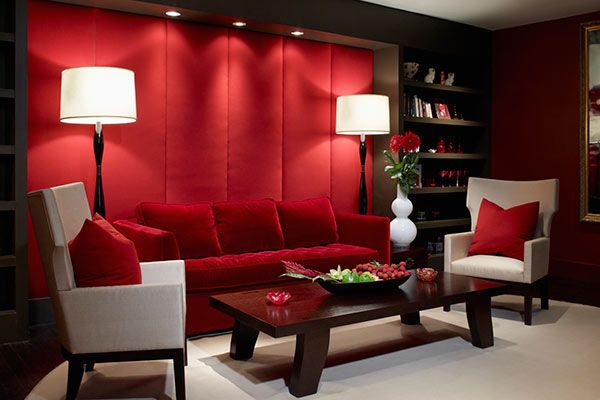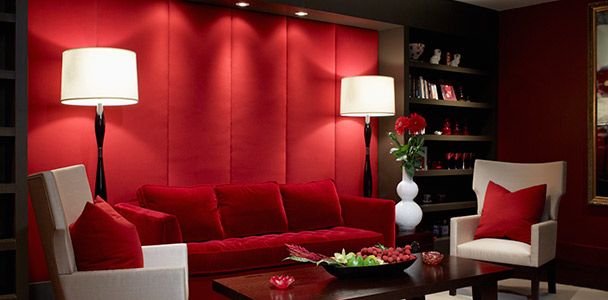
Often, “big windows” and “lots of light” are listed as a home’s greatest features. But interior rooms can be rescued from the dark ages with the right lighting treatment. Here, advice from a lighting pro on how to turn your windowless bath, basement, hallway, or office into a bright, welcoming space.
1. Go big.
If you can only create one source of light, make sure it’s big enough to fill the room, says Michael Murphy, an interior design pro for Lamps Plus. A rule of thumb: Take the dimensions of the room (say, 10 feet by 10 feet), add them together (so, 20 feet), and convert that number of feet to inches (20 inches). The result is the ideal diameter for your overhead light fixture.
2. Mind the shade.
For optimum light output, stick to overhead fixtures with bare bulbs or glass shades. “A solid shade or fabric shade will create a moody atmosphere, but not much light,” Murphy says. “And shades with metallic lining will force the light up and down but not to the sides.”
3. Add focus.
To help direct light where it’s needed, add plenty of task lighting. In offices and living rooms, this means using floor or table lamps; in kitchens or baths, task lights often take the form of pendants or recessed lighting. In small spaces, recessed lighting is often preferable to pendant lighting since it takes up less visual space and makes the room look larger.
4. Don’t forget the corners.
“People often overlook the corners of the room, and that’s valuable space,” Murphy says. “Leaving those dark makes the room feel smaller.” Planting a floor or table lamp can help concentrate light in these dim nooks and crannies.
5. Choose bulbs wisely.
Ideal lumen levels—the measurement for brightness—will vary based on the space you’re lighting. For overhead fixtures, look for bulbs with an output of 800 lumens; for task lighting and accent lighting, aim for 450-800 lumens per bulb. Be sure to consider the color temperature, too, Murphy says. Incandescent bulbs reside at the low end of the Kelvin scale—up to 2900K—so they’re more atmospheric. LED and CFL bulbs within the 3000K to 4900K offer a bright white light that’s more akin to direct sunlight; at 5000K and beyond, the light looks bluer, like a daytime sky.
6. Fake the look of windows.
By definition, a fully interior space lacks windows, but adding mirrors help bounce light around the room to mimic their effects—and when you choose mirrors with architectural frames, they can mimic the look of windows, too.

